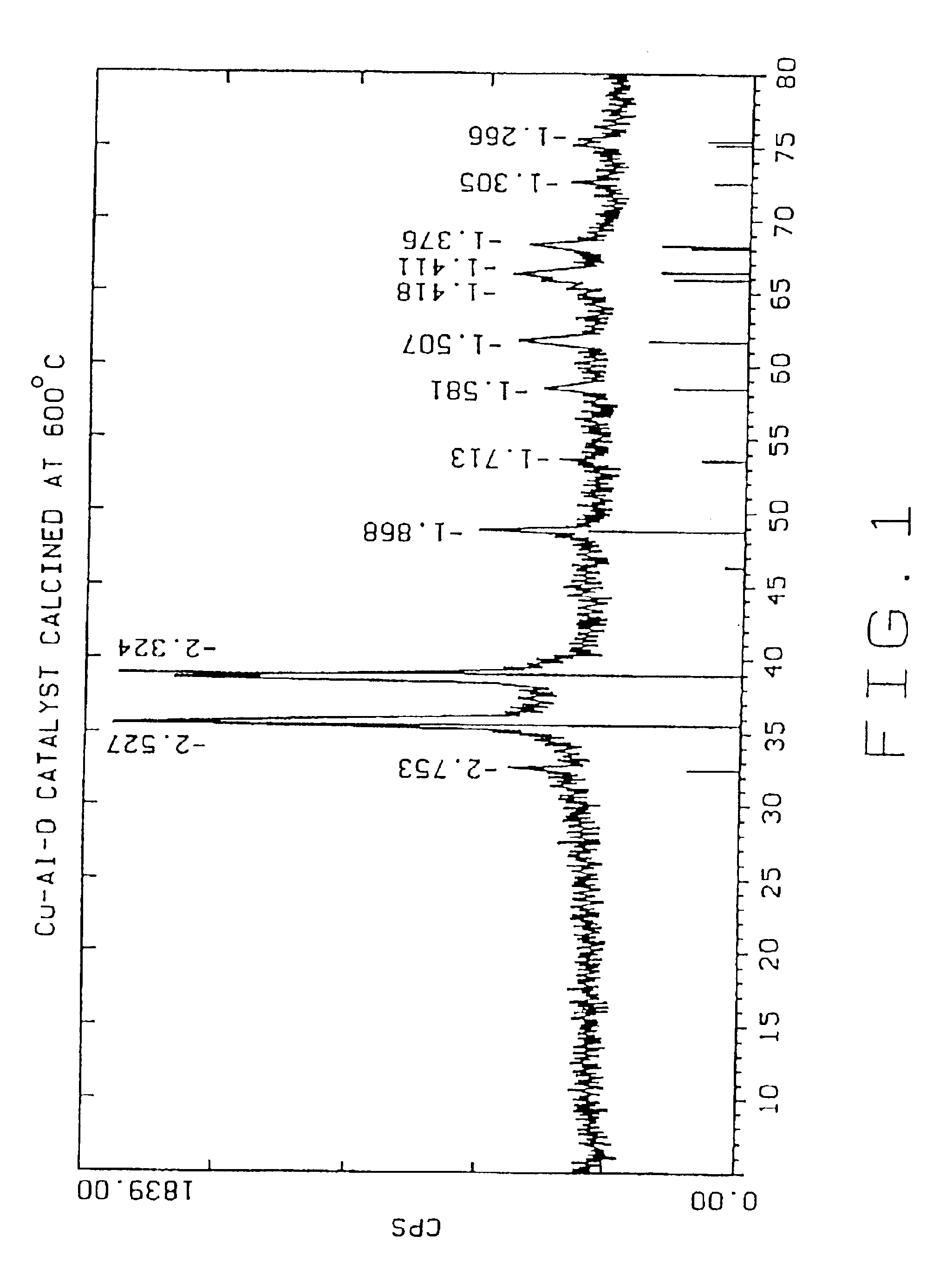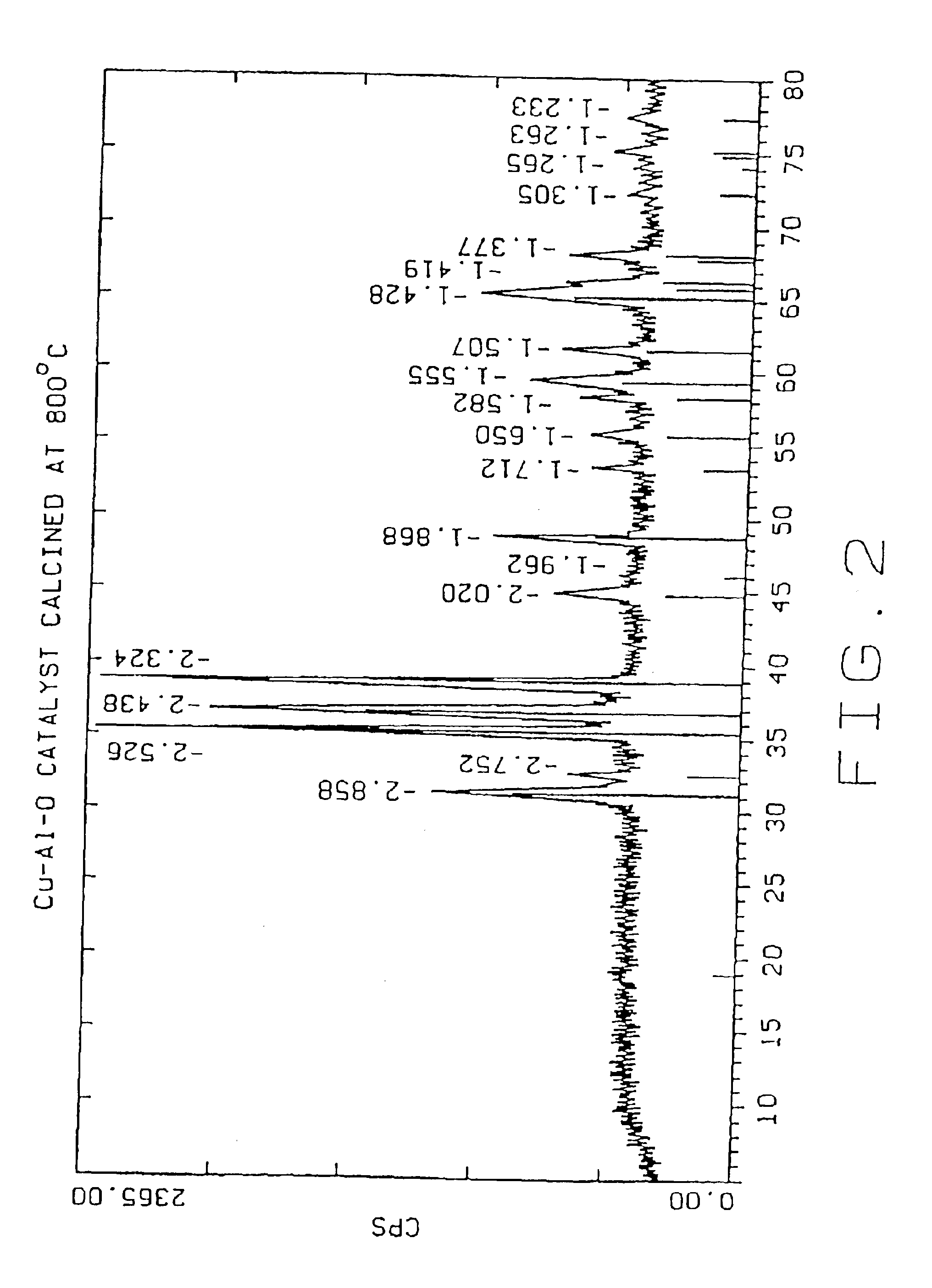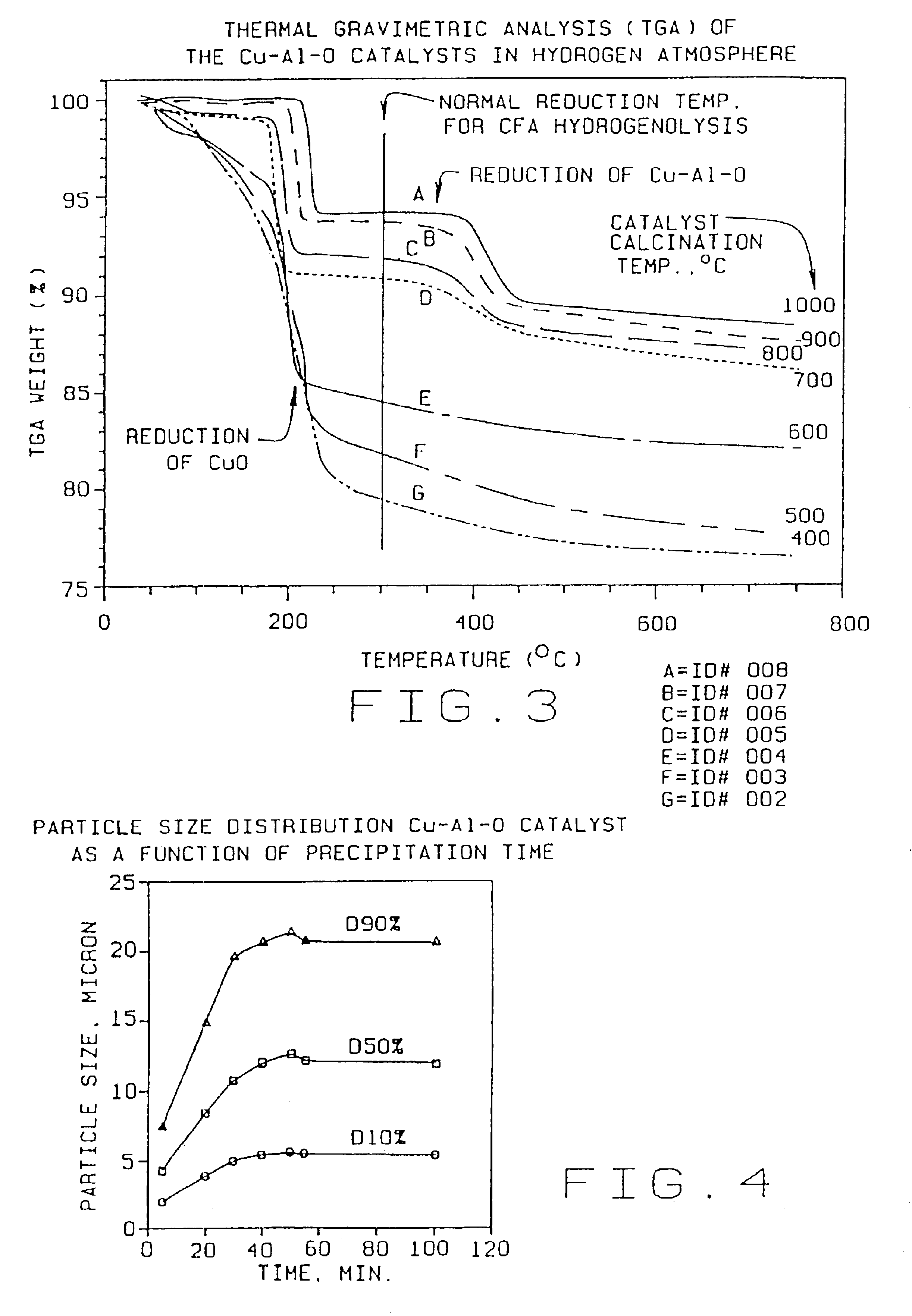Preparation and use of non-chrome catalysts for Cu/Cr catalyst applications
a catalyst and non-chrome technology, applied in the field of catalysts, can solve the problems of limiting the industrial applicability of catalysts, non-chrome containing catalysts, and their use in many cases
- Summary
- Abstract
- Description
- Claims
- Application Information
AI Technical Summary
Benefits of technology
Problems solved by technology
Method used
Image
Examples
example 1
Preparation Of Cu—Al—O Catalyst
[0039]The Cu—Al—O catalyst of the present invention was prepared as follows:
[0040]Weigh out 1640 g of copper nitrate solution (15.48% Cu) and dilute with deionized water to 2500 ml. Weigh out 815.6 g sodium aluminate (25% Al2O3) and dilute with deionized water to 2500 ml. Add 2500 ml deionized water to a 12 liter tank. Weigh out 318 g sodium carbonate (soda ash) and dissolve in deionized water to 1500 ml. Simultaneously add the copper nitrate solution and sodium aluminate solution to the 2500 ml of deionized water. The copper nitrate and sodium aluminate solutions may be added at a rate of 33 ml per minute. Add the sodium carbonate (soda ash) solution to the mixture, keeping the slurry at a constant pH ranging from approximately 6.0 to 8.5, preferably about 7.4, by adjusting the rate of addition of the soda ash solution. The precipitation can be carried out at a wide range of temperatures from room temperature to 90° C. or more. Typically the precipita...
examples 2-7
[0041]The following examples 2-8 were carried out in the same manner as example 1, except that the dried Cu—Al—O powder was calcined for two hours in air at the temperatures given below:
[0042]
Example 2500° C.Example 3600° C.Example 4700° C.Example 5800° C.Example 6900° C.Example 71000° C.
Characterization of Cu—Al—O Catalyst Prepared By Examples 1-7
example 8
Leachable Catalyst Cations
[0043]The leachable cations measurements are performed by reacting 100 ml 10% acetic acid with 10 g of powder catalyst for one hour with continuous stirring. The solution is separated, filtered and washed. The cation content in the solution is quantitatively analyzed.
[0044]The following Table 1 illustrates the leachable copper (Cu) and aluminum (Al) in catalyst prepared at different calcination temperatures. A commercially available Cu / Cr catalyst was also tested for comparison.
[0045]
TABLE 1Effect of Calcination Temperatures on Cu—Al—O Catalysts PropertiesParticle SizemicronSurfaceEx.CatalystCalcinationdv,dv,dv,Cu %,Al %,Area,No.IDTemp. ° C.10%50%90%leachableleachablem2 / gCu / Cr0011.815.762.64.3 0.7(Cr)26Control10024003.511.529.727 3.2718820035003.310.425.337.113.116730046003.510.322.76.9 4.0011440057002.78.928.33.9 1.907350068002.18.7222.3 0.583960079001.76.821.12.0 0.3314700810001.35.526.80.77 0.107
[0046]As illustrated in the above table, if the catalyst is...
PUM
| Property | Measurement | Unit |
|---|---|---|
| Temperature | aaaaa | aaaaa |
| Temperature | aaaaa | aaaaa |
| Temperature | aaaaa | aaaaa |
Abstract
Description
Claims
Application Information
 Login to View More
Login to View More - R&D
- Intellectual Property
- Life Sciences
- Materials
- Tech Scout
- Unparalleled Data Quality
- Higher Quality Content
- 60% Fewer Hallucinations
Browse by: Latest US Patents, China's latest patents, Technical Efficacy Thesaurus, Application Domain, Technology Topic, Popular Technical Reports.
© 2025 PatSnap. All rights reserved.Legal|Privacy policy|Modern Slavery Act Transparency Statement|Sitemap|About US| Contact US: help@patsnap.com



